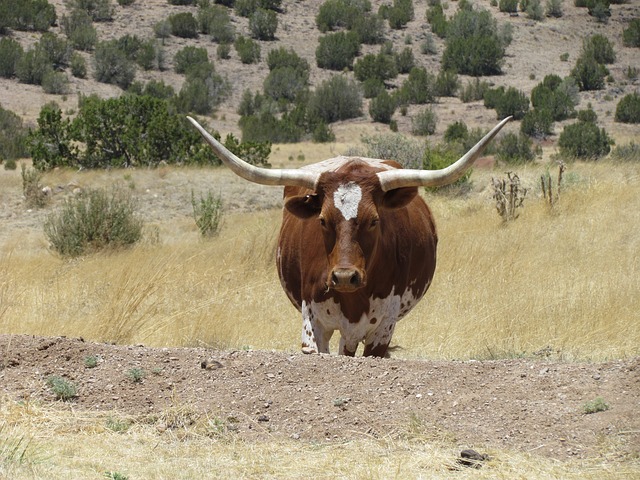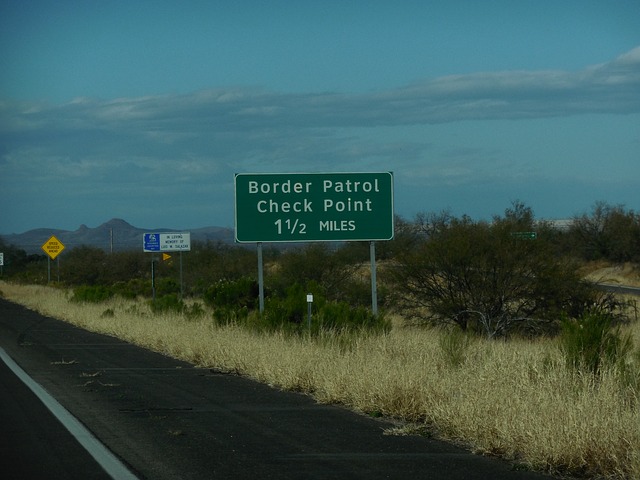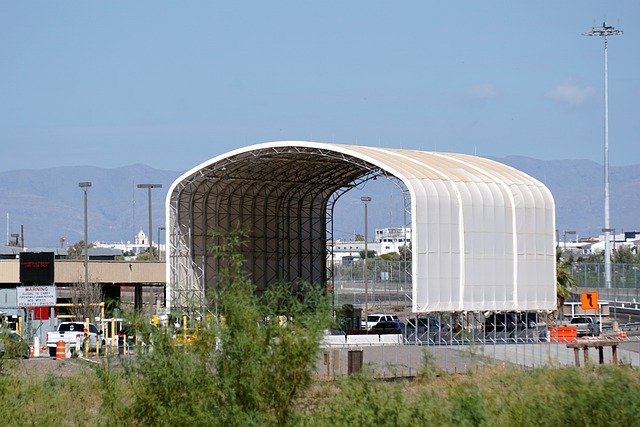Texas has over 2,000 kilometers of border with Mexico, while the entire U.S.-Mexico border is just over 3,000 kilometers. The vast majority of the border lies in Texas. Like New Mexico, Arizona, and California, Texas is on the “front line.” This is where the smuggling routes for people and drugs pass through. On the border, people face the wave of emigrants from South America and the crime associated with drug smuggling. Here, in the provinces, social sentiments are filled with sorrow and misunderstanding toward the actions of the Democratic Party, which advocates for the wide opening of borders to refugees. People accuse the Democrats of allowing immigrants in to build themselves an army of voters, who, after receiving green cards, will vote for them. There is outrage because illegal immigrants who have broken the law by crossing the border are given free food, shelter, and healthcare, while millions of Americans live in poverty or are homeless. The internet is full of “memes” comparing photos of homeless American families sleeping on the streets with small children alongside those of illegal immigrant families. The creators ask the question: who should the government take care of first? Over half a million homeless Americans or immigrants? Who should have priority? ask the skeptics of border openings for newcomers. Provincial Texas is getting louder and rebelling against the policy of open migration, in disbelief at the actions of Democratic California. In this way, Republicans, who are already the dominant force in Texas, are building their political capital.
ChatGPT może popełniać błędy. Sprawdź ważne informacje.

Due to the direct proximity to the border, Southerners view the issue of immigration very differently from residents of northern states, for whom this problem is much more distant, media-driven, and not tangible. As everywhere in the world, the “border” is a place that stirs up emotions. It’s an arena of not entirely legal dealings, smuggling, and sometimes systems of civilization so different that this narrow strip of land becomes a gateway to a completely different reality. The Texas-Mexico border is the front line in the fight against drug smuggling. The drugs are either produced in Mexico or brought to the U.S. border from South American countries. Why do cartels send drugs to the U.S.? Because there is a market there, there is money, and people can afford to be drug addicts. The money from the drug trade is so vast that this business will never end. Border patrols catch more smugglers, but the smuggling continues. Smugglers try to transport illicit substances by hiding them in cars or crossing the so-called “green border.” Armed to the teeth, they pose a real threat to American citizens.

The sprawling ranches are the arena for the quiet activities of cartels, and the American ranchers living there usually don’t travel without weapons. If you see someone on your ranch, you can assume they are either illegal immigrants or drug smugglers. It’s better not to engage directly with the latter. It’s worse if you happen to come across them by accident and have no way to retreat. In such a situation, relying on the police is pointless. By the time they arrived and found the person reporting it, it would already be too late. You need to have a weapon to defend yourself. That’s why, among other reasons, Texans will never agree to give up their right to own firearms. It can also be troublesome to meet someone who asks for a ride or is lying exhausted in a ditch, and we, guided by our own conscience, try to help them. Giving them a ride to the nearest road or town can land you in jail, as helping illegal immigrants is a criminal offense. If you meet someone on the road, it’s best to leave them there. These are the realities of life on the border.
The central and western parts of the Texas-Mexico border lie in the Chihuahuan Desert, which is larger than the surface area of Poland. It stretches from deep in Mexico to the southwest of Texas, New Mexico, and Arizona. It’s a geographically difficult area. In places where the desert is flat, border issues are more pronounced. More people try to cross the border illegally, and cartels, for example, dig tunnels for smuggling people and drugs. It’s different south of Marfa, TX, where Big Bend National Park is located. This part of the border is very geographically challenging. Rocky mountains rise up in the desert, making hiking and digging underground difficult. Around the park, there are a few tiny settlements, but it can safely be said that the area is uninhabited. Life in the desert is not easy. Summer temperatures can reach over forty degrees Celsius in the shade, and in winter they drop below freezing. There’s little vegetation for grazing cattle, little water, and snakes are everyday concerns for ranchers.

For those who cannot take refuge in an air-conditioned car and must walk through this desert on foot, death is a real threat. Even if they manage to create an artificially shaded spot, that shade is nothing more than a slightly more comfortable place to die. People who venture into this area unprepared, without water, a head covering, or who subject themselves to prolonged physical exertion, will inevitably perish. That’s why, in summer, immigrants travel only at night. In spring and autumn, when the temperatures are much lower, illegal border crossings intensify. The Border Patrol has twice as much work then, but still far less than in other border regions where the terrain is much easier.

The desert also brings sudden weather changes. One might think that in the desert, it’s always sunny, but nothing could be further from the truth. You could just as easily die from being struck by lightning during a downpour as from heatstroke. The Chihuahuan Desert doesn’t look like the Sahara. It rains there. During my stay, I experienced two evening storms. The landscape and temperature changed beyond recognition. During my November trip to Big Bend, I was caught in the rain on the road between Lajitas and Presidio. It started raining, but not everywhere around me—only in specific spots, a small area directly in front of my car. I was still melting in the sun, heading straight into a wall of rain. The sun burned the surrounding mountains, while the sky above my car began to pour an ocean of water. The downpour was so intense that the fastest setting on my windshield wipers couldn’t keep up, so I had to stop for a moment. In the short stretch between the sunlit part of the road and the part under the clouds, the temperature dropped by 16 degrees Celsius! A dramatic change, in literally a few seconds, over a distance of maybe 100 meters. As I started to approach the end of the cloud hanging above me, the temperature began to rise just as quickly, reaching my favorite 42 degrees Celsius in a place that didn’t exist. In just about a kilometer, I went from 42 degrees to 26 degrees, and then back to 42 degrees. These temperature changes happen year-round. In winter, at night, the temperature can drop below freezing. Over the course of a few hours, the temperature difference can exceed 20 degrees. That’s how it is in the desert. That’s how life is there. Despite the harsh conditions, people have their homes there, and despite the problems stemming from the proximity to the border, they live in symbiosis with Mexico. Centuries of Mexican influence and cultural blending have made Mexico feel like a brother to Texas. A dangerous, corrupt, poorer brother, but a brother nonetheless. Mexican and Anglo cultures have been mixing here for two hundred years. Thanks to NAFTA, American companies are investing in Mexico. People are starting mixed families, Mexicans are settling in Texas, and they are working hard for their future, driving the economy of the American state. The provinces of Mexico and Texas have a lot in common. Just like in Texas, on the Mexican side, there are vast ranches. People raise cattle, there’s rodeo, rattlesnakes, country music, and the same food. Mexican ranchers wear cowboy boots and hats. It’s coexistence, interdependence, an inseparable bond. You can’t understand Texas without thinking about Mexico.




Statistics 2019

The number of illegal immigrants, the construction of camps for refugees from South American countries, is reaching such a scale that it has become one of the main social issues in the USA. For example, throughout May 2019, authorities detained 1,200 people near Big Bend. Sometimes, groups of dozens of people try to cross from Ojinaga to Presidio, right in the middle of the town. Big Bend is a difficult terrain, which is why relatively few immigrants are there. However, the numbers are steadily increasing, but they are still incomparably lower than in other border areas. For example, during the same period, 50,000 people were detained in Rio Grande Valley and 40,000 in El Paso. This amounts to over 90,000 immigrants in just three border regions of Texas. From January to the end of September 2019, a total of one million people were arrested along the entire U.S.-Mexico border. The year before, the number was half a million. Border enforcement agencies have to deal with this scale of illegal border crossings. So many people end up in temporary camps, and taxpayers have to support them. According to U.S. Border Patrol, from 2008 to 2017, when immigration levels were much lower, over 7,000 people died attempting to cross the border illegally. Now these numbers are dramatically rising. The desert does not forgive. Texas is home to two-thirds of the entire border, and the main burden of border protection falls on this state.
